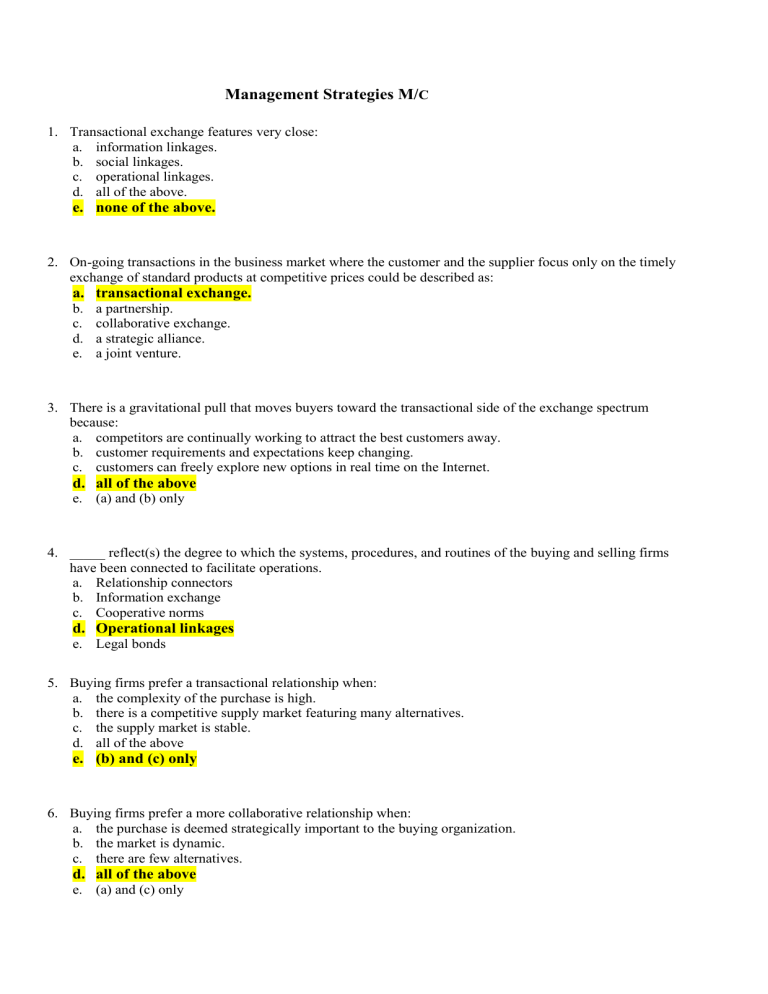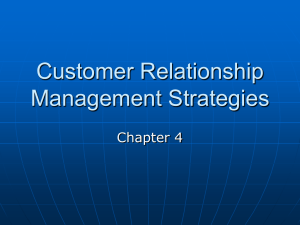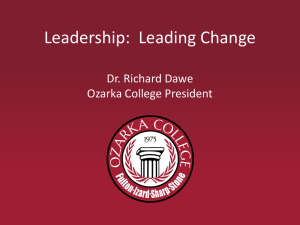
Management Strategies M/C 1. Transactional exchange features very close: a. information linkages. b. social linkages. c. operational linkages. d. all of the above. e. none of the above. 2. On-going transactions in the business market where the customer and the supplier focus only on the timely exchange of standard products at competitive prices could be described as: a. transactional exchange. b. c. d. e. a partnership. collaborative exchange. a strategic alliance. a joint venture. 3. There is a gravitational pull that moves buyers toward the transactional side of the exchange spectrum because: a. competitors are continually working to attract the best customers away. b. customer requirements and expectations keep changing. c. customers can freely explore new options in real time on the Internet. d. all of the above e. (a) and (b) only 4. _____ reflect(s) the degree to which the systems, procedures, and routines of the buying and selling firms have been connected to facilitate operations. a. Relationship connectors b. Information exchange c. Cooperative norms d. Operational linkages e. Legal bonds 5. Buying firms prefer a transactional relationship when: a. the complexity of the purchase is high. b. there is a competitive supply market featuring many alternatives. c. the supply market is stable. d. all of the above e. (b) and (c) only 6. Buying firms prefer a more collaborative relationship when: a. the purchase is deemed strategically important to the buying organization. b. the market is dynamic. c. there are few alternatives. d. all of the above e. (a) and (c) only 7. Transactional relationships: a. are characterized by high levels of information exchange. b. are emphasized by buyers when the purchase is viewed as less important to the organization's objectives. c. are more likely to involve operational linkages. d. all of the above e. (a) and (c) only 8. Collaborative relationships: a. are emphasized by buying firms when the purchase is deemed important to the organization. b. are emphasized by buyers when the complexity is high. c. are more likely to involve operational linkages. d. all of the above e. (a) and (b) only 9. Which of the following statements about buyer-seller relationships is(are) true? a. Customers prefer a transactional orientation when there are few alternative offerings from suppliers. b. Customers emphasize a collaborative orientation when the purchase decision is not complex. c. Collaborative relationships are more likely to involve operational linkages and high levels of information exchange. d. All of the above e. None of the above 10. Which of the following statements about transactional relationships is(are) true? a. Customers emphasize a transactional orientation when the purchase is viewed as less important to the organization. b. Customers prefer a transactional relationship when the market is dynamic (for example, rapidly-changing technology. c. Transactional relationships are more likely to involve operational linkages. d. all of the above e. none of the above 11. Which of the following statements about collaborative relationships is(are) true? a. Customers prefer a collaborative relationship when there is a competitive supply environment featuring many alternatives. b. Collaborative relationships are less likely to involve operational linkages between the buying and selling firms. c. Buyers prefer collaborative relationships when the purchase decision is not complex. d. all of the above e. none of the above 12. For collaborative customers, the business marketer should: a. invest resources to build operational linkages and information-sharing mechanisms for the relationship. b. directly assist customers with planning and strategy development. c. work with a wide array of managers on strategy and coordination issues. d. all of the above e. (a) and (b) only 13. For transactional customers, the business marketer should: a. see that operational linkages are designed into the relationship to keep product and service offerings aligned with customer needs. b. directly assist the customer with planning and strategy issues. c. focus primary attention on the purchasing staff. d. all of the above e. none of the above 14. Rather than adopting the approach of "one design fits all," the astute marketer matches the strategy to the product and market conditions that surround a particular relationship. Which of the following statements is(are) true? a. It is unwise for marketers to make specialized investments in transactional relationships. b. For transactional customers, the salesperson should center primary attention on the purchasing staff. c. Transactional customers display less loyalty to a particular supplier and can easily switch part or all of their purchases from one vendor to another. d. all of the above e. (a) and (c) only 15. Business marketing relationships vary in terms of their closeness or degree of collaboration. Transactions that are almost, if not entirely, void of a close, collaborative relationship: a. do not involve the exchange of money. b. involve long-term, contractual commitments. c. are one-time exchanges of value between two parties with no prior or subsequent interaction. d. intend to move each partner toward the attainment of some long-term strategic goal. e. none of the above 16. The belief by a partner that an ongoing relationship is so important that it deserves maximum effort to maintain it is referred to as: a. trust. b. solidarity. c. relationship commitment. d. a strategic alliance. e. interfirm cooperation. 17. _____ exists when one party has confidence in a partner's reliability and integrity. a. Trust b. c. d. e. Solidarity Relationship commitment A strategic alliance Interfirm cooperation 18. The open exchange of information is a characteristic of ____ relationships. a. Close b. c. d. e. Distant transactional all of the above (b) and (c) only. 19. Value can be defined as the _____ benefits received by a customer firm in exchange for the price paid for a product offering. a. economic b. technical c. Social d. all of the above e. (a) and (b) only 20. Using the continuum of working relationships, the industry bandwidth refers to: a. the range of relationship strategies (from transactional to collaborative) that are pursued by competing firms. b. c. d. e. the number of competitors in the particular industry. always-a-share customers. the lost-for-good customer. the number of organizations in a straight rebuy situation. 21. Business marketers track customer loyalty and retention because: a. the cost of new customers is often far less than long-standing customers. b. all satisfied customers will remain loyal. c. the firm can identify opportunities for expanding the relationship. d. the cost of serving established customers usually increases. 22. When a business marketer demonstrates special skills in managing relationships with key customers or by developing innovative strategies with alliance partners, they are trying to create: a. a collaborative advantage. b. an equal advantage. c. an arm’s length transaction. d. a transactional exchange. e. None of the above. 23. _____ centers on all activities directed toward establishing, developing, and maintaining successful exchanges with customers and other constituents. a. Relationship marketing b. Transactional exchange c. A strategic alliance d. Buying centers 24. Which of the following are reasons for business marketers to employ relationship marketing activities? a. Loyal customers are far more profitable than price sensitive customers. b. Having strong relationships with customers can be hard for competitors to understand or duplicate. c. Both (a) and (b) are true. d. Neither (a) nor (b) is true. 25. _____ involves a partner’s belief that an ongoing relationship is so important that it deserves maximum efforts to maintain it. a. Trust b. Relationship commitment c. Relationship marketing d. A strategic alliance 26. When organizational buyers consider changes from one selling firm to another, what are the two main categories of switching costs they consider? a. Trust and relationship commitment b. Transactional and collaborative relationships c. Investments and risk of exposure d. Operational linkages and relationship connectors. 27. _____ features very close information, social, and operational linkages as well as mutual commitments made in expectation of long-run benefits. a. Transactional exchange b. Value-added exchange c. Competitive exchange d. Collaborative exchange 28. _____ occur in between the two extremes on the relationship continuum, where the focus of the selling firm shifts from attracting customers to keeping customers. a. Transactional exchanges b. Value-added exchanges c. Competitive exchanges d. Collaborative exchanges 29. Which of the following are goals of customer relationship management (CRM)? a. A continuing dialogue with customers. b. Personalized treatment of the most valuable customers. c. Achieving customer retention. d. All of the above. e. (a) and (c) only. 30. A(n) _____ represents the products, services, ideas, and solutions that a business marketer offers to advance the performance goals of the customer organization. a. industry bandwidth b. value proposition c. marketing plan d. customer relationship management program 31. Which of the following performance attributes has research recently shown influences customer satisfaction of business buyers? a. Responsiveness of the supplier in meeting the firm’s needs. b. Product quality. c. Delivery reliability. d. All of the above. e. Only (a) and (b). 32. When business marketers are assessing which of their current customers represent the best opportunities for growth, which of the following factors should be considered? a. The cost-to-serve the customer. b. Projected profit margins. c. The current share of the wallet the firm has attained. d. All of the above. e. Only (a) and (b). 33. _____ illuminates exactly what activities are associated with serving a particular customer and how these activities are linked to revenues and the consumption of resources. a. Customer profitability b. Activity-based costing c. Total cost of ownership d. Margin analysis 34. Relationship efficacy a. relates to the longevity of the relationship between a buyer and seller b. is created by interactions at the top levels of the two firms involved in a relationship c. refers to the ability of an interfirm relationship to achieve desired objectives. d. is not required if the firms are in an arms-length relationship e. none of the above 35. From the customer's perspective, relationship quality centers on: a. the sensitivity of the salesperson in understanding how business conditions affect the industry within which the buying firm operates. b. the ability of the salesperson to understand the selection criteria of each member of the buying center. c. trust in the salesperson. d. satisfaction with the salesperson. e. both (c) and (d) 36. ____ is composed of at least two dimensions: (1) trust in the salesperson and (2) satisfaction with the salesperson. a. role definition b. relational adaptiveness c. relationship quality d. role congruity e. relationship congruity



